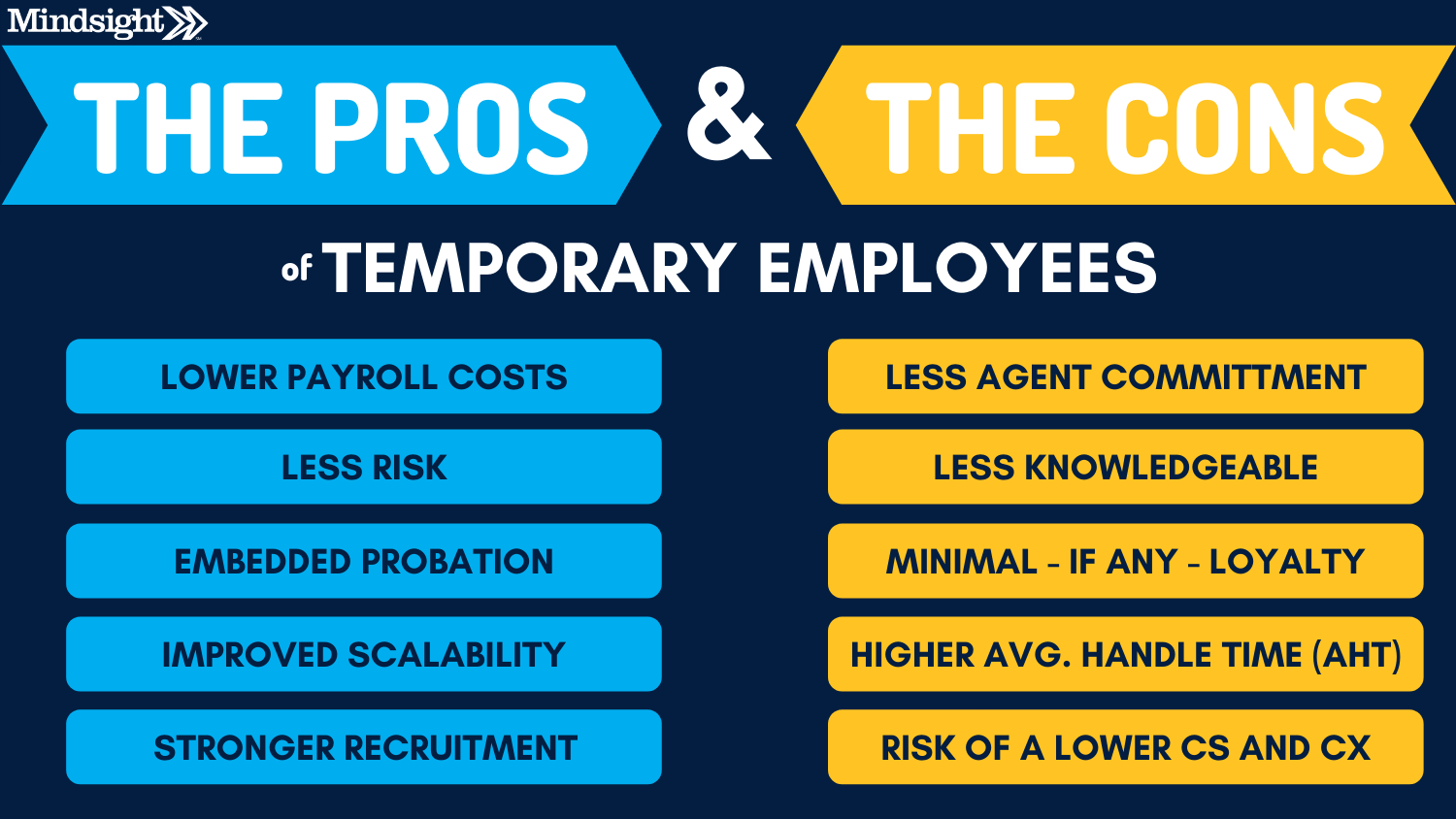February 4, 2020 by Siobhan Climer, John Irey, and Kleid Gjataj
Seasonal employees are an integral part of contact center operations. Business ebbs and flows and adding employees during busy call periods is vital to the customer’s experience.
 Temporary call center agents may not be in it for the long haul, but their job satisfaction, knowledge, and talent are just as important to your customers because your callers don’t care whether the agent they are speaking to is temporary or full-time. Your callers care about problems solved and a great customer experience.
Temporary call center agents may not be in it for the long haul, but their job satisfaction, knowledge, and talent are just as important to your customers because your callers don’t care whether the agent they are speaking to is temporary or full-time. Your callers care about problems solved and a great customer experience.
That is why it is important for contact center managers to invest in strategies that integrate temporary employees into the call center.
Why Hire Temporary Employees At All?
Temporary employees can ease much of the demand that comes with seasonal rise and fall of a business. From retailers hiring seasonal cashiers around the holidays to seed distributors hiring temporary customer service representatives (CSRs) in the early spring, every business has uptime and downtime.
Seasonal employees can bring relief during busy times, but they bring with them their own challenges.
How To Overcome The Challenges
The difference between temporary and full-time call center agents can’t be entirely erased, but as a contact center leader you can take steps to help better integrate temporary employees into your call center. You’ll improve morale, customer service, and operational sustainability all at once.
Steps To Integrate Temporary Employees Into Your Call Center
Welcome Them To The Team
Standard onboarding procedures are key to setting staff up for success, but your seasonal CSR onboarding strategies will look a bit different from your full-time onboarding methodology.

Seasonal employees tend to feel more isolated and less embedded in the organization’s culture. Some things you can try to improve engagement are:
- Partner seasonal employee with a regular employee
- Ensure office space is interspersed (i.e. don’t hide temporary employees in a windowless, isolated room)
- Provide a mini-onboarding program to improve self-efficacy
- Treat them as equals and with respect
- Create a supportive training environment
- Ensure temporary employees are involved in company culture
- Offer as many regular benefits as you are able (i.e. IDs, cafeteria-access)
Provide A Path To Advancement
Temporary employees are an excellent way to build a recruitment pipeline. By clearly delineating a path by which a seasonal or temporary worker could become a full-time member of your team, you help build loyalty and dedication.

Don’t lie, though – and be sure to help your temporary employees transition away from your organization with a dedicated offboarding program.
Some ways you can provide a path to advancement are:
- Provide opportunities for high-performance temporary agents to move into full-time roles
- Reward top performers using measurable analytics
- Clearly identify a path towards advancement during onboarding
- Provide continued learning and training opportunities
- Help transition employees at the end-of-hire period with offboarding
Simplify Temporary Agent Roles
When onboarding temporary call center agents, focus their efforts on specific tasks. This simplifies training – you only need agents to respond to one type of query – and provides your more experienced staff with bandwidth for more complex tasks. It also makes the role more manageable for temporary agents.

Some ways you can simplify temporary employees’ roles are:
- Provide a specific defined role or task for temporary agents
- Train agents to recognize more complex tasks and transfer them
- Offer spaced training, which reduces overall training time and increases retention
Ensure Technology Runs Smoothly
The contact center platform you use and the physical infrastructure you provide can go a long way towards onboarding and offboarding temporary employees. A cloud-based contact center platform ensures you can add and remove agents easily while also providing embedded training.

Some ways to ensure the technology runs smoothly for temporary employees are:
- Deploy a user-friendly contact center platform
- Clean up workspace by bundling cables and providing up-to-date equipment
- Ensure technology solutions are optimized for scalability
- Assess your current technology deployments and develop a strategic roadmap
Integrating temporary call center representatives is an important aspect of a contact center manager’s role. By aligning both the interpersonal people skills – from training and atmosphere – to the more quantifiable benefits of an aligned contact center roadmap, contact center leaders can ensure that temporary agents are a net positive for the call center.
Find out more about creating a contact center roadmap with our guide, Customers Drive, You Navigate: Your Contact Center Roadmap to Customer Care Success.
Like what you read?
Contact us today to discuss how you can use technology to integrate temporary employees in your call center.
About Mindsight
Mindsight is industry recognized for delivering secure IT solutions and thought leadership that address your infrastructure and communications needs. Our engineers are expert level only – and they’re known as the most respected and valued engineering team based in Chicago, serving emerging to enterprise organizations around the globe. That’s why clients trust Mindsight as an extension of their IT team.
Contact us at GoMindsight.com.
About The Authors
John Irey is a Principal Consultant at Mindsight, an IT Services and Consulting firm located in the Chicago area. With nearly 20 years of experience in information technology, John has helped businesses of every size optimize the technology powering the contact center. He has extensive experience with contact center technologies and seeks to provide a consultative voice to contact center leaders, who rely on Mindsight’s transparency to make the best technology investments. John earned his BA/BS in Information Systems and continues to focus on how emerging technology, such as machine learning and artificial intelligence, impact the contact center. John enjoys spending his free time with his wife and two young children.
Kleid Gjataj is the Principal Solutions Architect at Mindsight, an IT Services and Consulting firm located in the Chicago area. With nearly 15 years of experience in both domestic and international consulting, Kleid has helped contact centers of all sizes to bridge the gap between business and technology. His extensive experience with IVR, ACD, screen pop, omnichannel, speech analytics, quality management, outbound dialer, and custom applications is grounded in understanding the critical value of the customer journey. Kleid earned his degree in Network and Communications Management and continues to focus on how contact center optimization helps businesses meet goals, increase efficiencies, and reduce costs.
Siobhan Climer, Science and Technology Writer for Mindsight, writes about technology trends in education, healthcare, and business. She writes extensively about cybersecurity, disaster recovery, cloud services, backups, data storage, network infrastructure, and the contact center. When she’s not writing tech, she’s reading and writing fantasy, gardening, and exploring the world with her twin daughters. Find her on twitter @techtalksio.


